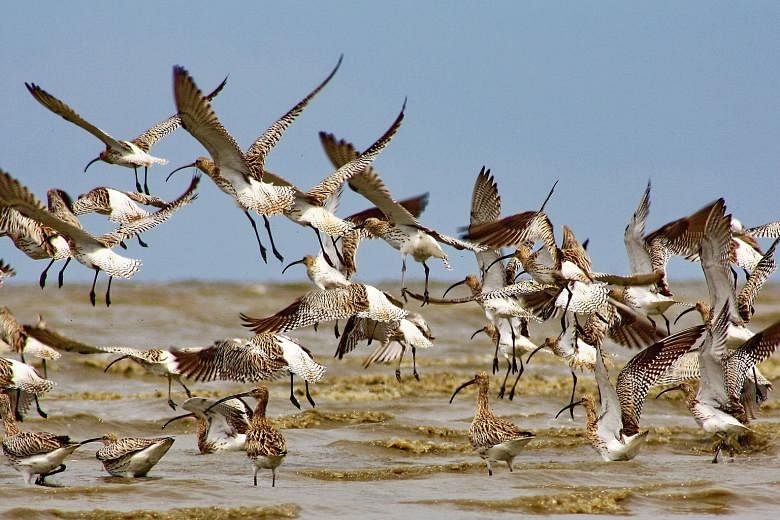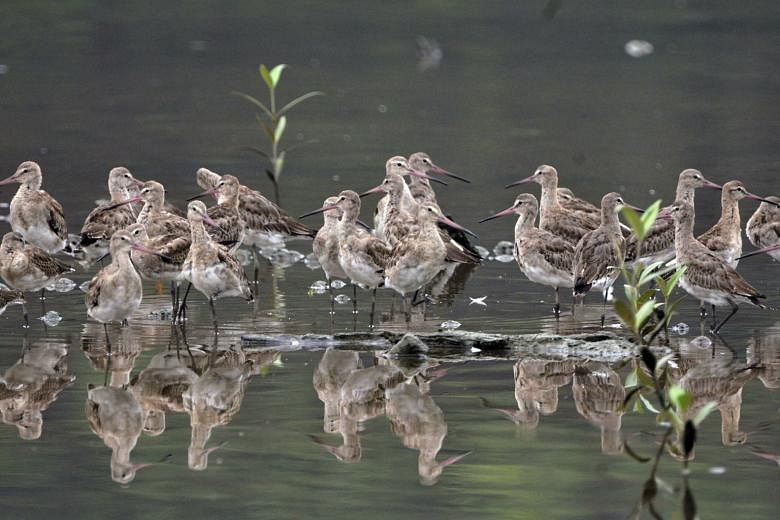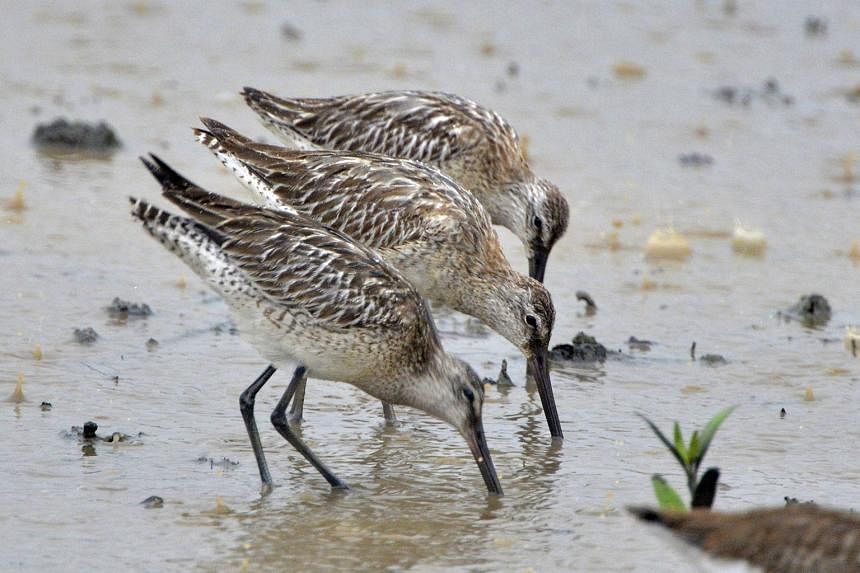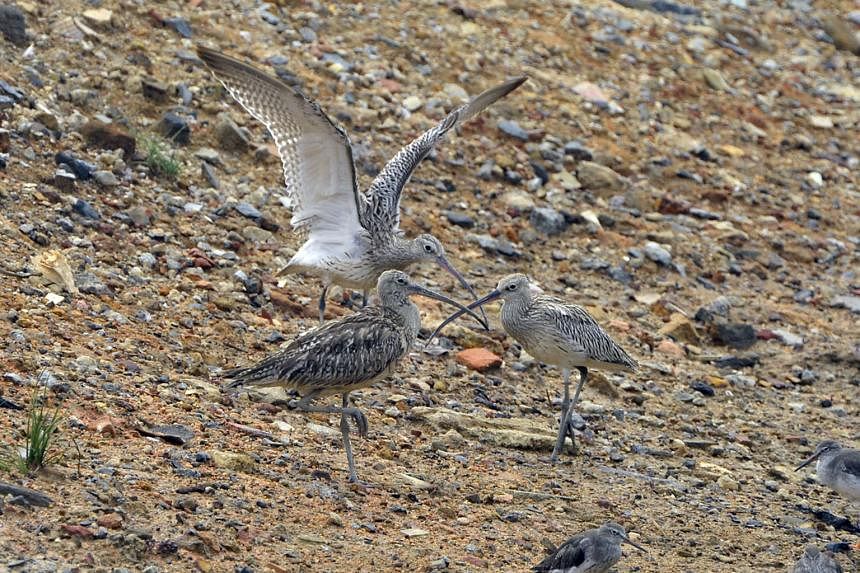Last year, bird-watchers rejoiced at a spike in uncommon bird sightings in Singapore, but the reasons behind the rare visits could be sinister.
The haze in the surrounding regions could have driven birds to seek refuge in Sungei Buloh Wetland Reserve, says the National Parks Board (NParks).
"With Sungei Buloh Wetland Reserve being a protected area, it could be that these birds, which do not usually come here, had decided to stop over as it provided them with a better refuge," Mr Wong Tuan Wah, NParks director of conservation, explained.
Among the uncommon birds which were sighted more frequently last year was the black-tailed Godwit. A total of 32 were spotted in the wetland reserve in September last year, the highest number in 20 years. Previously, only two of the creatures, at most, made an appearance each year.
Seven Asian Dowitchers and three Eurasian Curlews were also sighted in September - the highest count in the past decade.
While Singapore was not spared the effects of the transboundary haze crisis last year, other locations in Indonesia and East Malaysia - the birds' favourite haunts - were harder hit. At the peak of the haze crisis in October, total emissions from the fires rose to nearly 1.4 billion tonnes.
Mr Yong Ding Li, an ecologist at the Australian National University and a member of the Nature Society (Singapore) Bird Group, said the haze may have resulted in these shorebirds dispersing more widely to look for food.
-
Uncommon visitors
-
BLACK-TAILED GODWIT
The long-legged bird has a long and straight bill and a global population of 700,000.
It breeds in North-east Asia and the eastern parts of Russia. Other populations breed in Europe and West Central Asia.
EURASIAN CURLEW
The bird, which has a long and down-curved bill three times the size of its head, breeds in Central Siberia. It has a global population of one million.
ASIAN DOWITCHER
Classified globally as near threatened, the bird which has a long and black bill often stops over for just a day at the Sungei Buloh Wetland Reserve.
Its global population is estimated to be 23,000.
Carolyn Khew
•Source: Migratory Birds Of Sungei Buloh Wetland Reserve, an NParks publication
"These birds forage on coastal mudflats and it is possible that the pollution resulting from the haze reduced the numbers of invertebrates which they eat," he said.
During the avian migratory season, many shorebirds pass the coastal wetlands on the west coast of the Malay Peninsula and Eastern Sumatra, Mr Yong explained.
Singapore is part of the East Asian-Australasian Flyway which stretches from Arctic Russia and Alaska to Australia and New Zealand.
While some birds fly by Singapore, a relatively small green spot for them to fatten up, thousands arrive at the reserve in August and September to take respite from harsh winters.
"In some years, events might cause some sites along the East Asian-Australasian Flyway to be in less than ideal condition, but this is where the Flyway, with many sites spread across more than 20 countries, shows its value - the birds are able to fly to another site if they are not comfortable at their usual one," Mr Wong said.
"Having choices is important for their continual survival and conservation."
Mr David Tan, a bird researcher from the National University of Singapore, cautioned however that it is difficult to draw a direct connection between the increase in sightings and the haze.
"It could be due to an increase in the number of observers or other environmental factors... We won't know unless we do an actual study," he said.
Weather or wind conditions could also have pushed some of the birds in the direction of Singapore, said Mr Lim Kim Chuah, chairman of the Nature Society's bird group.
"It's hard to make any inference from just one year of data. Regardless, as development encroaches on many of the staging and wintering grounds in other parts of Asia, Sungei Buloh will continue to play an increasingly important role for the thousands of migratory birds that pass through Singapore," the veteran bird-watcher said.





